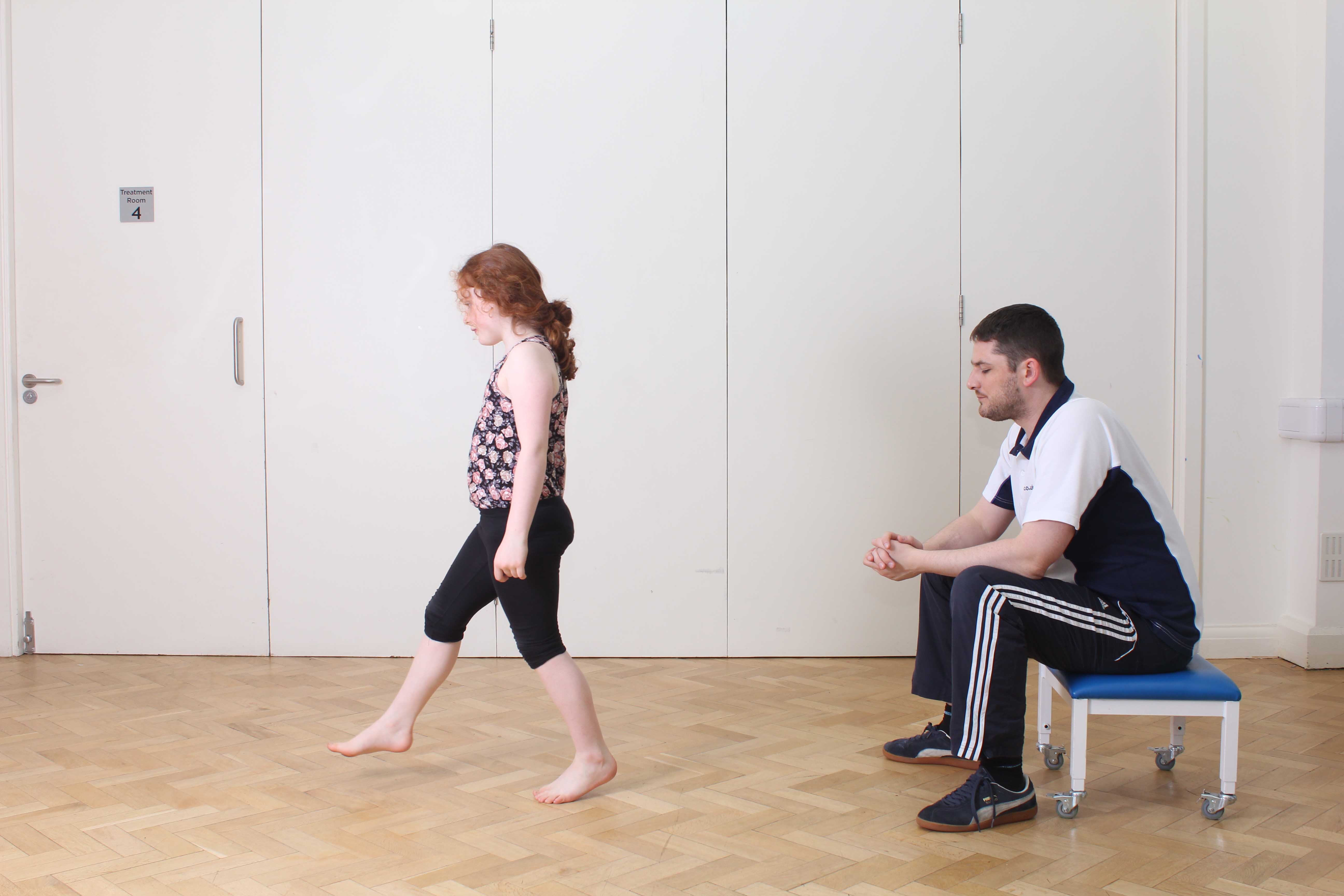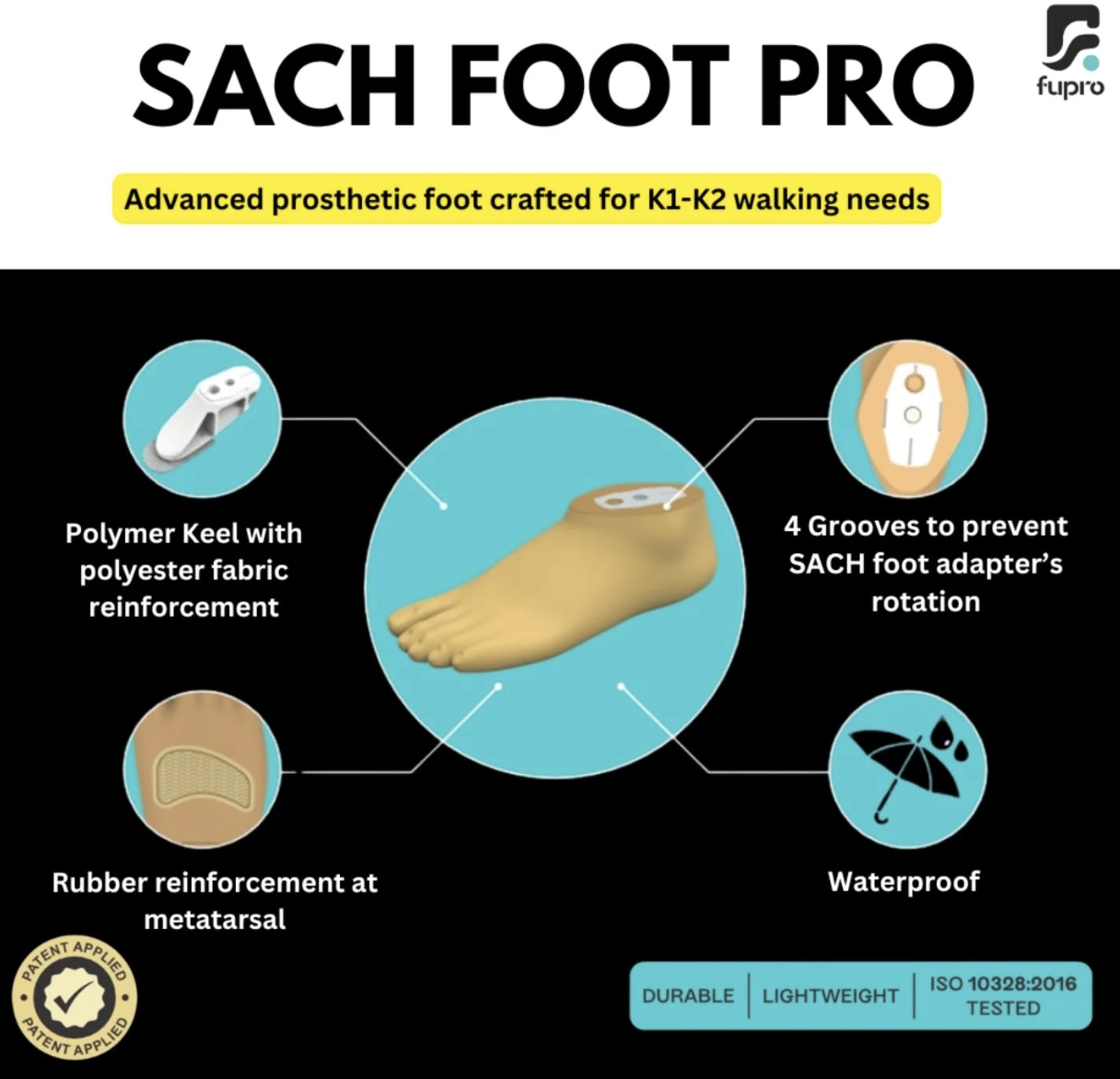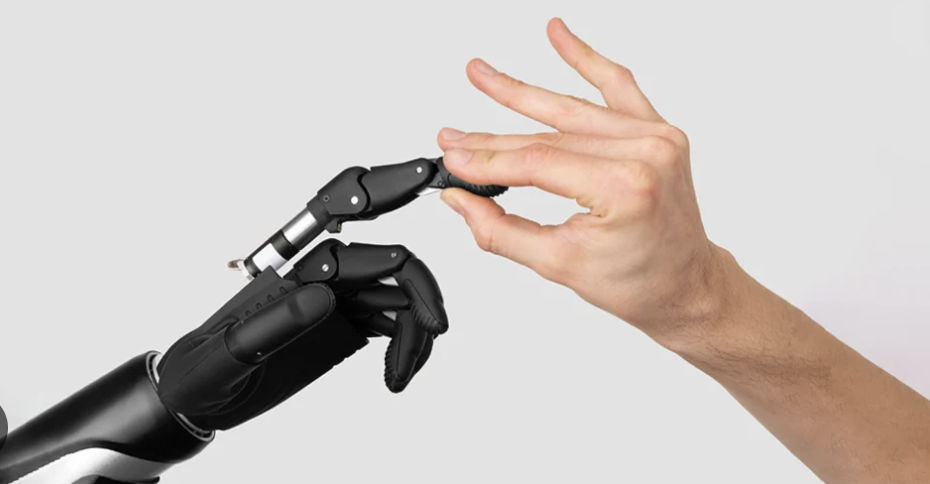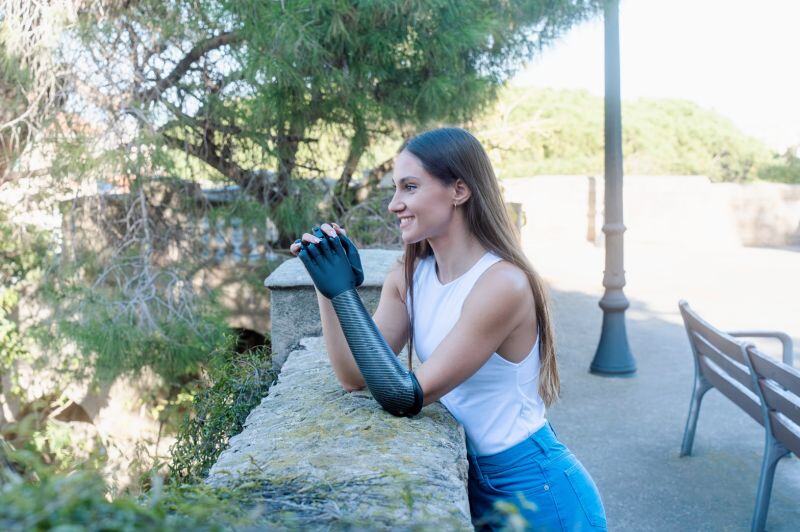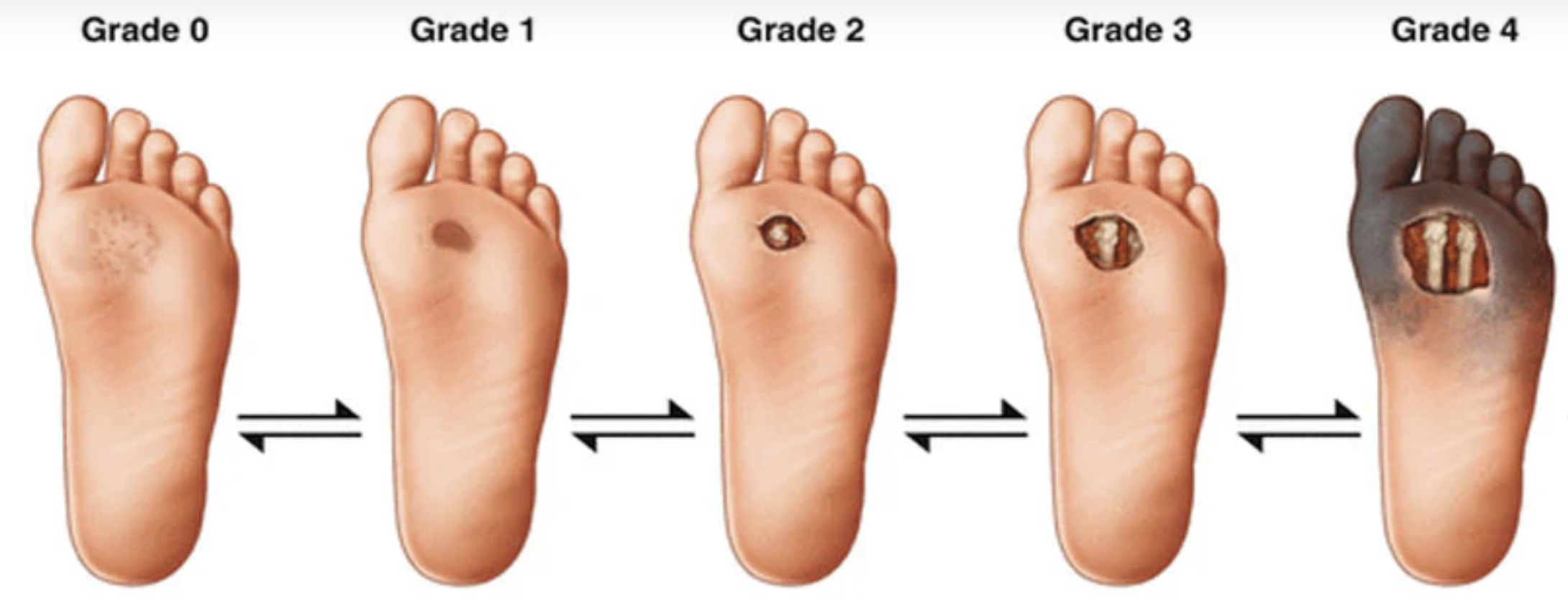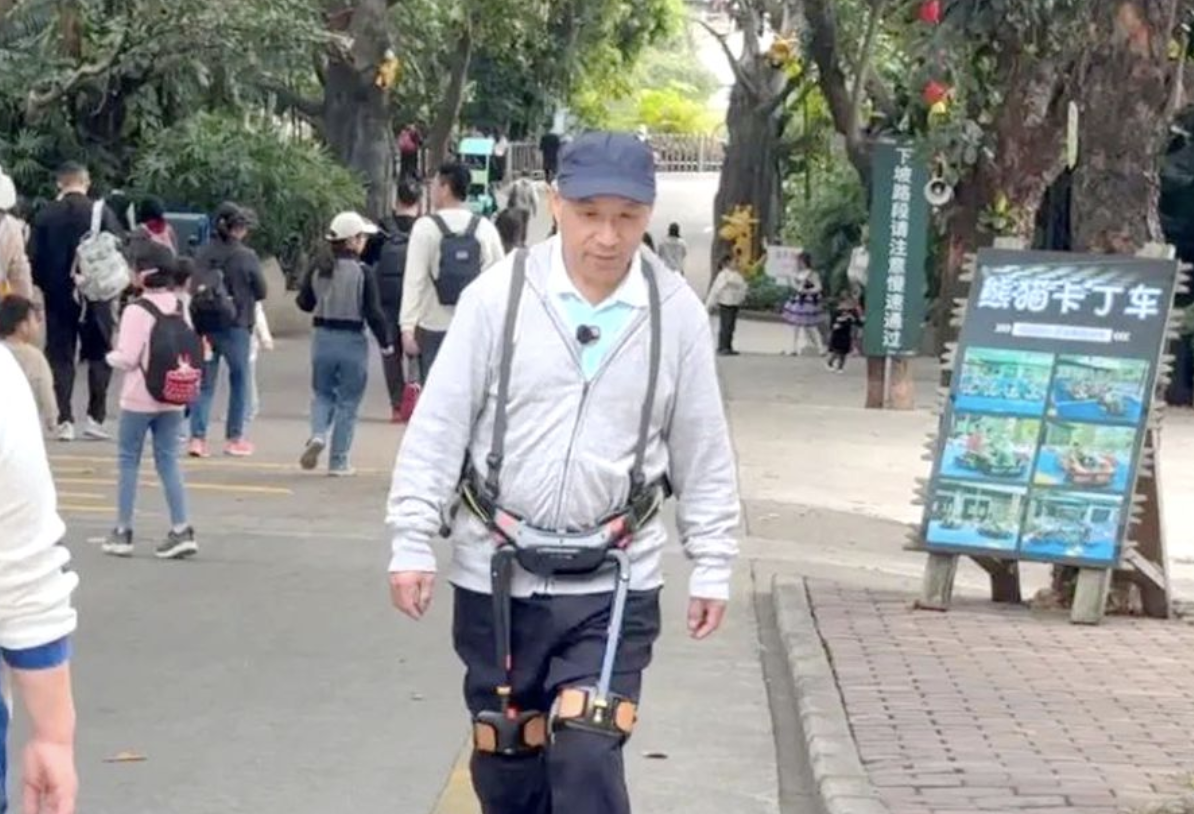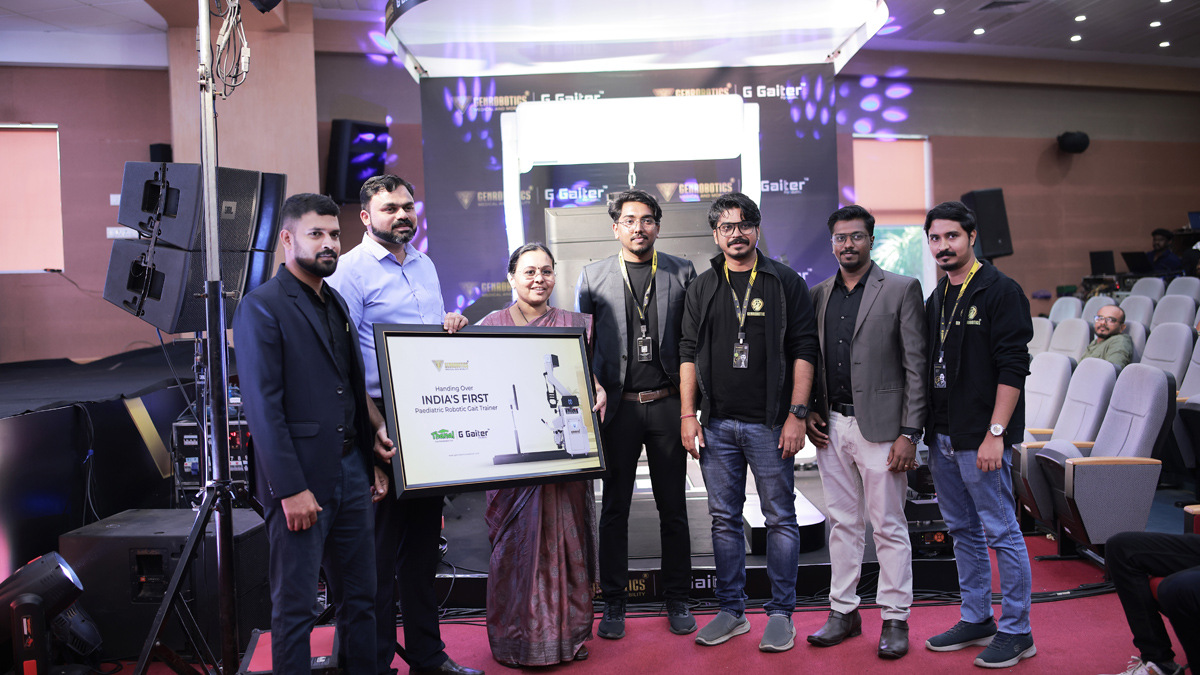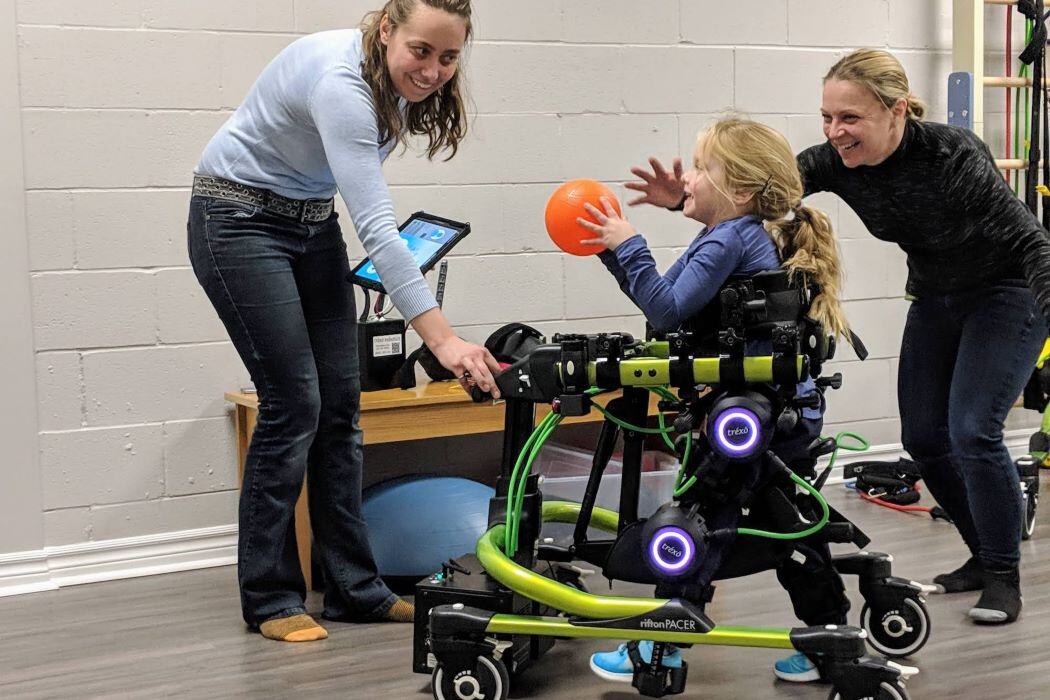Children with cerebral palsy who trained with an untethered, torque-assisted, wearable exoskeletal robot were able to navigate “overground terrain,” ramps, and stairs. Researchers behind that study say the device could complement standard rehabilitation.
A wearable robot did slightly more to improve the gait of children with cerebral palsy (CP) on some measures than standard physical therapy, according to a study published in July in JAMA Network Open.
The study used an untethered, torque-assisted, wearable exoskeletal robot developed in South Korea that allowed study participants to walk on a path of their choosing in hospitals.
Previous studies of robot-assisted gait training (RAGT) have had mixed results, the authors said. They hypothesized that using a robot that provided assistance only as needed and allowed users to take a more varied path may have improved engagement and triggered better motor learning.
Most robots currently available for pediatric CP therapy are treadmill-tethered and trajectory-controlled or end-effector models, they wrote. An end-effector robot “interacts with the user's limb through a point of contact at the end of the robot, such as a footplate,” said Ja Young Choi, MD, PhD, an associate professor in the department of rehabilitation medicine at Chungnam National University Hospital who was principal investigator for the study. Such end-effector robots and exoskeletal robots tethered to a treadmill move a patient's limb along a predetermined path.
“To our knowledge, no multicenter, large-scale, randomized clinical trials exist on the effects of overground wearable exoskeleton RAGT in children with CP,” the team wrote.
The robot used in the study, Angel Legs M20, allows users to navigate “overground terrain,” ramps and stairs. In the study, however, the children only used it to walk on level hospital hallways, Dr. Choi said.
The authors concluded that the device could complement standard rehabilitation. They called for more research to “explore various types of robotic systems to establish more robust clinical evidence for RAGT.”
Study Details
Five rehabilitation institutions in Korea participated in the study. Therapists who evaluated function before, immediately after completion, and four weeks later were blinded to the type of therapy children had received.
Ninety children were randomized in the trial, and 78 completed it. That included 37 in the RAGT intervention and 41 in a control group who received conventional physical therapy. Each received 30 minutes of therapy three days a week for six weeks. The average age of the children was 9.5 years. They were assessed as having Gross Motor Function Classification System levels of II to IV. Children at level II can walk indoors and outside independently and climb stairs with a railing. Those at level IV use a wheelchair most of the time and have severely limited ability to walk.
The primary outcome was the Gross Motor Function Measure 88 (GMFM-88) score, which measures changes in gross motor function over time in children with CP; the total possible score for the GMFM-88 is 100, with higher scores indicating better gross motor function. The researchers also recorded several other measures, including those for balance, lower extremity control, six-minute walking distance and oxygen consumption, and 3-D analysis of gait parameters.
Children who trained with the robot had significantly better scores on the GMFM-88 than those in the control group, with a mean difference of 2.64 on the 100-point test. On secondary measures, the mean difference was 2.70 for the GMFM-E, 1.31 for the GMFM-66, and 2.52 for the Pediatric Evaluation of Disability Inventory-Computer Adaptive Test (PEDI-CAT). The PEDI-CAT measures functional skills in daily activities, mobility, as well as social/cognitive domains. Four weeks after the intervention, the robot-assisted group showed significantly greater improvements in balance control and gait deviation than the control group.
Value of the Study With Limitations
Experts on rehabilitation for children with CP said they were intrigued by potential uses of robots and artificial intelligence.
David Fogelman, MD, a pediatric physiatrist at Boston Children's Hospital who has a background in engineering, said he was struck by the potential of the torque-assisted nature of Angel Legs. “It's adapting as you are getting stronger,” he said. He also liked the fact that the robot was not tethered to stationary equipment and allowed kids to wander more freely.
“That to me is a big deal. You are adding motivation and decision-making to it,” he said.
Ann Tilton, MD, FAAN, a professor of neurology and pediatrics at Louisiana State Health Sciences Center, agreed that it was important that the young patients were triggering and directing their movements. Other robotic options, she said, “are very passive.”
The experts said the study was generally well designed and participants were evaluated with rigorous tests. While the number of participants might seem small by adult study standards, they thought it was reasonably large, given the limited numbers of children with CP and the time commitment required.
They had concerns, however, about the relatively modest benefit of robotic therapy, which they assumed would be costly, and about how practical exoskeletal robots would be for most patients in real life. They also thought a longer follow-up period would have been better.
Dr. Choi said previous studies showed that the minimal important change in GMFM-88 scores is 1 to 2 percent. The difference in this study—2.64 points—is considered “clinically significant in the context of cerebral palsy rehabilitation,” she said. “Even small improvements can represent meaningful gains in a child's daily life,” she added.
She said the changes varied by child. “Some children showed improvements in balance control, others in climbing stairs or ramps, and another in sit-to-stand transitions,” she said. “For parents, these changes can translate to less reliance on assistive devices and increased confidence in their child's abilities, contributing to a better quality of life.”
But Drs. Fogelman and Tilton, as well as Joe Collins, PT, DPT, MS, PCS, a specialist in pediatric physical therapy who works at the Waisman Center at the University of Wisconsin-Madison, all wondered how noticeable a change of this size would be to parents or patients.
They thought the study should have included feedback from patients and families.
“I would have loved to see more qualitative assessments and a longer-term follow-up,” Dr. Collins said.
Dr. Tilton, who directs a rehabilitation center at Children's Hospital of New Orleans, said the questions she keeps in mind when evaluating treatments are: “Does it make you live your life more independently? Is it meaningful to patients or families?”
She and Dr. Collins questioned whether it was wise to include patients with such a wide range of baseline skills. In future studies, they would like to see analyses of results by classification level. That could answer one of Dr. Tilton's questions: “Who's the right one to get it?”
Dr. Collins said studies have shown that function in CP peaks quite early in life—earlier than the average age of kids included in the study. Children at levels I and II tend to improve up to about age 7 and then plateau. Those at levels III, IV, and V improve to about age 6 and then decline. That means that the kids in the study had already passed their peak of function, he said.
In future work, he'd like to see what happens when younger kids have access to this kind of robotic therapy. Could that possibly increase their peak performance? On the other hand, the older study population speaks well of the study's results. “You're getting gains in kids where you're really not expecting improvements in function,” Dr. Collins said.
In future studies, Dr. Tilton would like to see robots like Angel Legs compared with treadmill gait training, which is more widely available.
The study authors pointed out that one limitation of Angel Legs is that it assists patients only in the sagittal plane. Dr. Fogelman said that means it helps only the movements you would see if you watched a stick figure walk from the side. When people walk, there is also considerable movement in the coronal plane, the side-to-side movement you see while watching someone walk toward you.
“I think working in multiple planes, to me, seems more significant,” he said. “I think the coronal plane is very important.”
He added that he thinks “building a training program around this technology would be cool, but I also wonder if there are different robotic systems for different needs.” Some might work just at the ankles, he said, or at the knees and ankles.
Dr. Fogelman thinks the engineering challenge will be creating robots that are small and light enough for young children. He wonders if they may someday be programmed to give feedback to doctors about which patients have early signs of muscle contractures.
Dr. Collins said it is possible that only helping in the sagittal plane is useful for overall strengthening. “That means that the robot is not helping them stabilize in other planes, so children are having to recruit muscles that assist in other planes,” he said.
He also thought the robots could play a role in preventing contractures by encouraging children with cerebral palsy to walk more.
Future Uses for Robots in Therapy
Dr. Tilton said the JAMA Network Open study shows that this type of robot rehab is “worth exploring,” but she expects that “affordability and access are going to be limiting factors” in any attempt to achieve widespread acceptance of the new technology.
Dr. Collins also suspects cost will be a problem. It can take a long time now to get insurance companies to approve less expensive technology for kids, such as standing frames or power wheelchairs, he said. Keeping costs for robots down should be a priority.
A question researchers will face eventually is whether the goal of using the robots is to maximize independent function or to, as Dr. Fogelman put it, create a more “bionic approach” for kids who need constant assistance.
He thinks the latter “may have this as-yet-untapped potential to really add something qualitatively different to the lived experience” of children with more severe disability.
Some of his patients can't go on vacation with their families now because their wheelchairs are too bulky for the family car. Maybe a robot could make them more mobile. “I'm obsessed with what their life is like,” he said.
While patients and their parents can be very focused on walking, Dr. Collins is more interested in overall function. Even assisted walking can be exhausting, and he thinks that energy can be put to better use.
Dr. Tilton also said that assisted walking takes a lot of energy. She thinks we are far from being able to use robotic devices all the time. “I can't imagine it being in a community setting,” she said, questioning what happens when the user needs to go to the restroom. “Let's be practical.”
That said, she was excited that a condition that affects more than 700,000 people in the United States alone is getting some research attention: “I'm thrilled that we're looking at advances in cerebral palsy.”
Disclosures
Dr. Choi disclosed that the research was funded by the Korean government and Chonnam National University Hospital Biomedical Research Institute and that the study received no funding from Angel Robotics Ltd., which makes the robots. Drs. Collins and Tilton had no disclosures.
